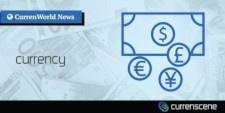Sentiment in financial markets mostly recovered after fears around the coronavirus wrecked equities across the globe. The S&P 500, DAX[1] and Nikkei 225[2] gained this past week, sending the pro-risk Australian Dollar[3] to the upside on average aside from the US Dollar[4]. Market mood ended on a cautious note Friday with a lack of a material increase in the Fed’s balance sheet[5].
Rising U.S. government bond yields throughout most of the past 5 days meant the markets were lessening dovish expectations from the Federal Reserve. This aided the US Dollar, which saw notable gains against some of its European peers such as the Euro[6] and British Pound[7]. Anti-fiat gold prices[8] cautiously fell as sentiment-linked crude oil prices[9] appeared to find a bottom.
China’s economy is expected to slow further amid the coronavirus outbreak and time will tell if the effects will be temporary or reveal deeper financial flaws. In the week ahead, the focus may turn to economic event risk and central bankers. Fed Chair Jerome Powell is to testify for Congress during his semiannual report while ECB President Christine Lagarde addresses the EU Parliament.
The Reserve Bank of New Zealand is expected to keep rates unchanged at 1.00 percent, but its forward guidance may spark NZD/USD[10] volatility. Mexico’s central bank is anticipated to cut rates by 25-bp however. EUR/USD[11] and GBP/USD[12] may be closely watching growth reports from Germany and the United Kingdom respectively.
Fundamental Forecasts:
Euro Weekly Price Forecast: Fundamentals, Data Suggest a Terminal Decline [13]
The Euro remains under downside pressure after a week when any short-term



